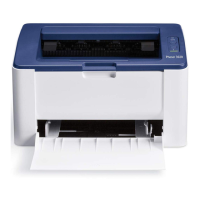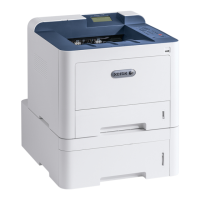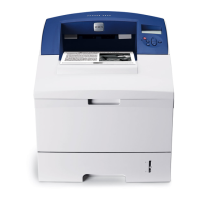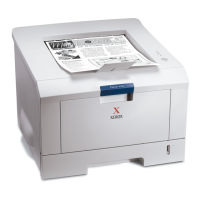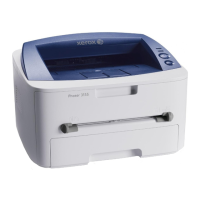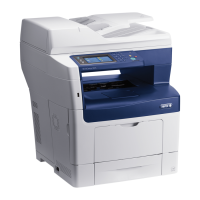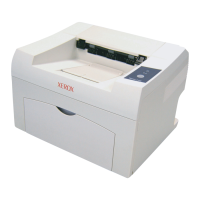QMS 3825/3225/2025 User's G uideC-14
Sessions
also gives you the flexibility to override the major document’s global
printing attributes for one or more subjobs.
Some printer description languages support language-specific
markers which work well when the complete document is composed
of a single printer description language generated by a single
application. However, language-specific markers do not work very
well when you need to create a document from files using multiple
printer description languages. In such cases, high-level document
manipulation applications find it difficult to deal with markers without
taking into account the language and semantics of the
language-specific delimiters.
Sessions solve that difficulty by offering a language-independent
means of combining multiple subjobs.
Here are some examples of applications for which you might want to
use sessions:
■ To print “wild card” file selections on UNIX or VMS computer
systems.
■ To print the chapters of a technical manual, such as this one,
as a single document.
■ To print a series of different monthly, weekly, or yearly reports
as a batch process.
How is a Session Used?
A session is invoked by the DOC %%Session command.
Language-independent delimiters included in the command allow any
data acceptable to an emulation, including 8-bit data, to be trans-
ferred to the printer without terminating documents or subjobs early
and out of context.
» Note: The session mecha ni sm is s upported only for opt ional netw ork
interfac es on Q MS Crown printe rs at t his tim e. It is not s upported for jobs
submitted through any other interface LocalTa lk, pa rallel, or seri al. Use of
the %% Session command in print jobs submit ted over non-network
communication channels m ay le ad t o incorrect or e rroneous out put.
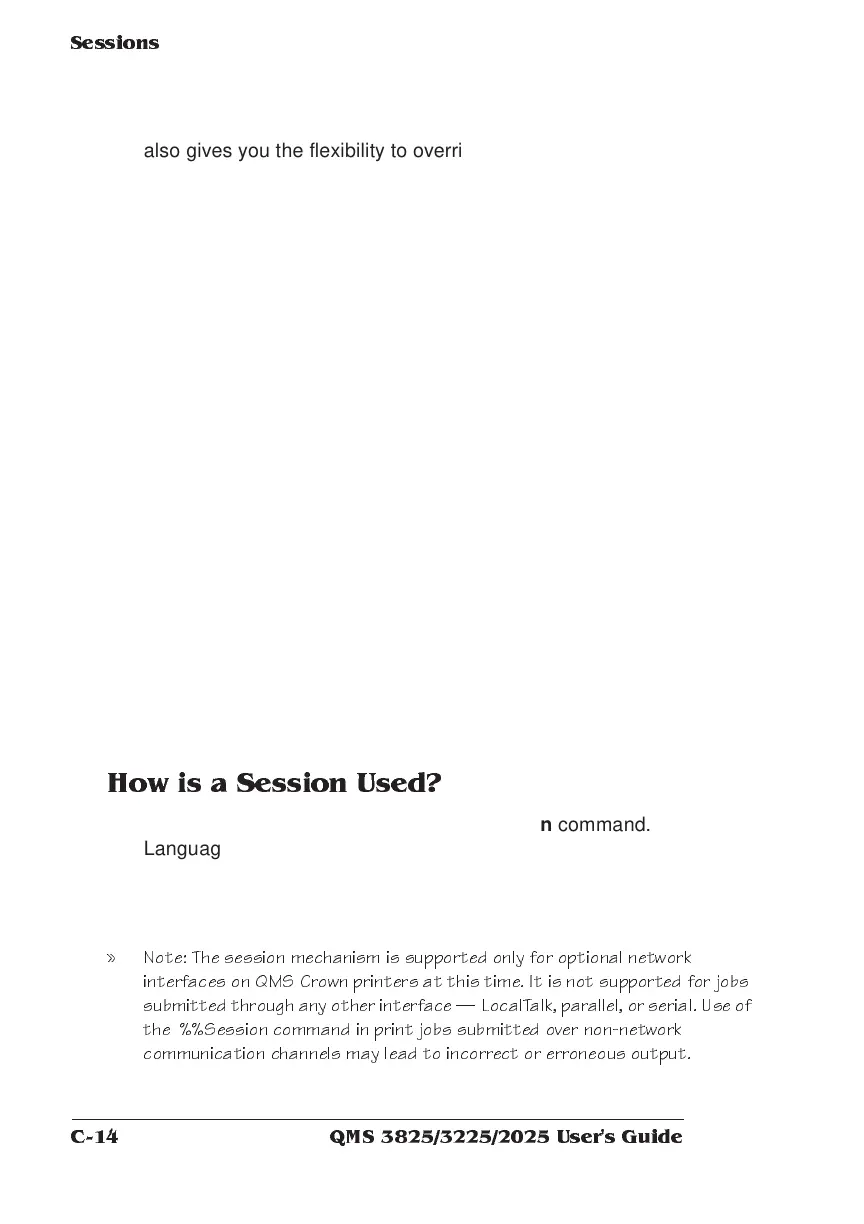